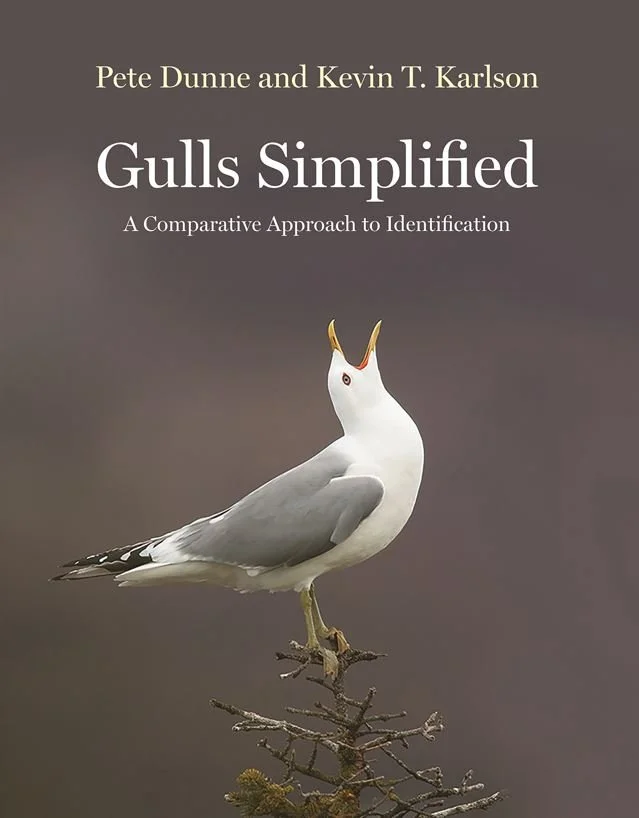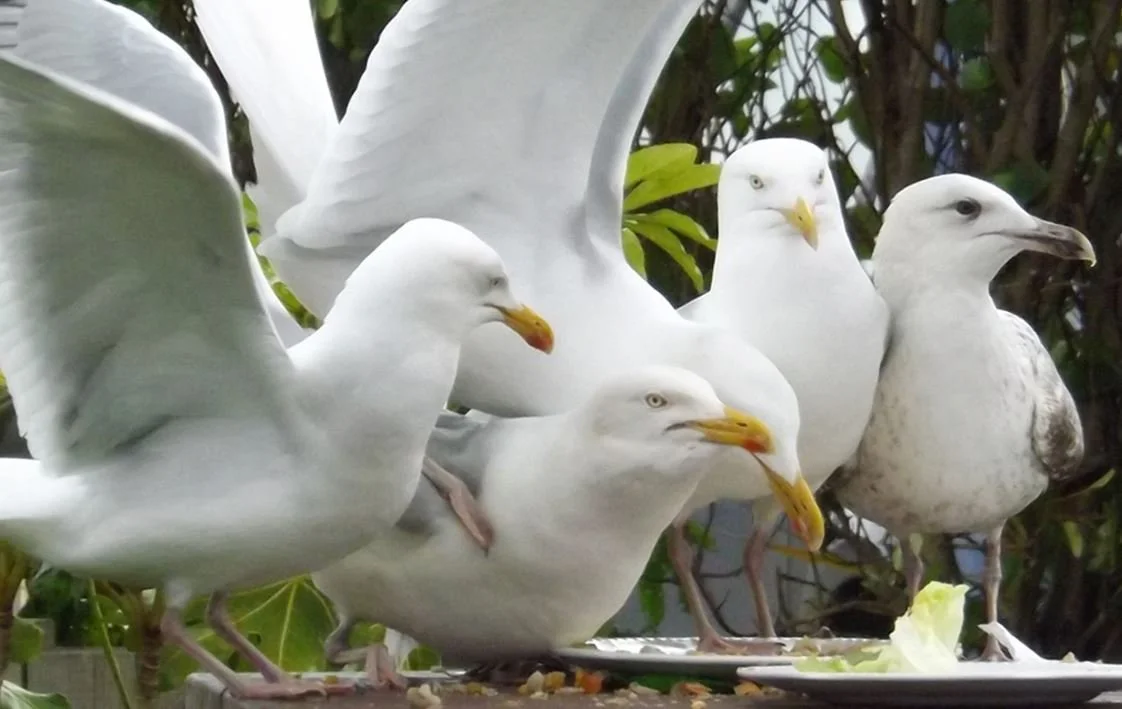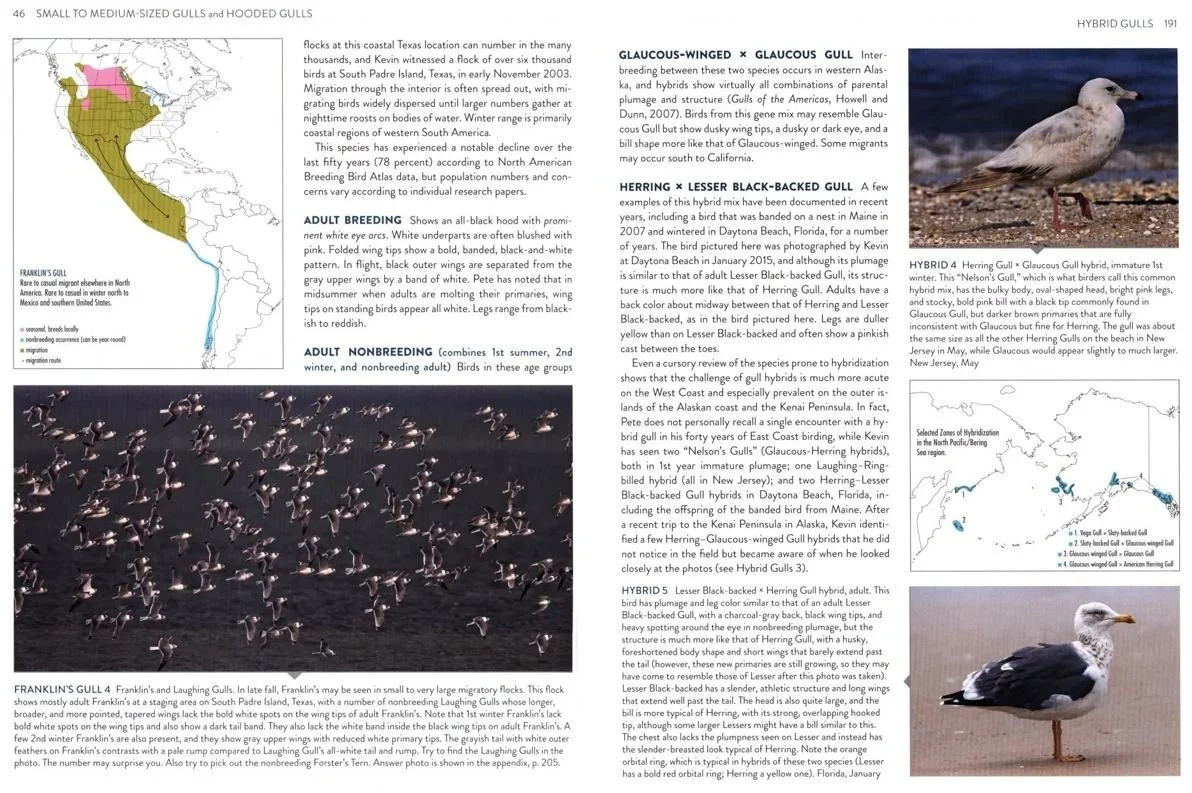Time for another book review…
It’s a tired and familiar lament that gulls – in particular the big, white-headed Larus species – are hard to differentiate, members of various species/subspecies sometimes being really hard to get right. Add to this the fact that these big, long-lived birds undergo a complex series of plumage changes which last a few years. If you know gulls and have an interest in them, you might sometimes have been frustrated or confused by the inadequacy of most field guides that cover the group. Don’t we need something better, something that features numerous illustrations and pointers on how the gulls can be identified (and preferably something affordable… I love the Pica Press books, but it’s difficult to be super-keen on them when they cost over £50).
Caption: I have an enormous number of gull photos, and the vast majority show Herring gull L. argentatus. This photo - taken in Cornwall in 2018 - is interesting because it shows how individuals in a group do not necessarily behave aggressively toward one another, even when competing for food. The very different look of the subadult at far right is also interesting. Image: Darren Naish.
Dunne and Karlson’s Gulls Simplified is the answer to our prayers… sort of. Conveniently sized, inexpensive, attractive and really well designed, it sorts gulls into four major groups (yes, the modern genus-level taxonomy is used) before discussing each species in turn. The text is concise, non-technical and friendly, often humorous. It summarises the key aspects of appearance and form, in addition to status, distribution and the appearance of immatures.
Caption: a few (non-consecutive) pages from the book, borrowed from NHBS.
I really like this book. It’s extremely well illustrated, the same species being shown in numerous situations and in numerous views, often (helpfully) alongside other similar species. I adore the many photos which show gulls of two, three or even four species standing alongside one another. Even among closely related species that are part of the same group, prominent – often surprising – differences in proportion and size are evident. Also fun are photos showing gulls alongside, or interacting with, entirely different animals, among them ducks, waders, raptors, otters and humans.
The bad news for gull-fans in general is that the book is entirely dedicated to North American gulls. I feel cheated, as – while I can appreciate, of course, that the production of such a work would be oh so much harder to pull off – I assumed from the title and summary that it covered all the gulls of the world. Oh well.
Caption: Herring gull again. So many details to pay attention to: note the orbital ring, the gonydeal bulge near the tip of the lower jaw and its red spot, the extent of the gape line, and the shape of the bill tip. Image: Darren Naish.
Anyway… if you’re seriously interested in gulls, or like them or pictures of them, you really must get this book. It’s a valuable addition to the birding literature, is great fun to look at, contains a vast amount of excellent and very useful information, and is excellently priced.
Dunne, P. and Karlson, K. T. 2019. Gulls Simplified: A Comparative Approach to Identification. Princeton University Press, Princeton and Oxford. pp. 208. ISBN 978-0-691-15694-1. Softback. Here from the publishers, here at amazon, here at amazon.co.uk
Gulls have been covered a few times before here at TetZoo, see…
To the Sahara in quest of dinosaurs (living and extinct), December 2008
Your Awesome Neighbourhood Herring Gull (And Its Many Cousins), September 2015
Hacks Vs Wildlife: the Eternal Vilification of Gulls, July 2019
Cases of Over-Enthusiastic Swallowing, Often (But Not Always) Ending in Death, August 2021
Articles like this are possible because of the support I receive at patreon. Please consider supporting my research and writing if you don’t already, thank you so much.








